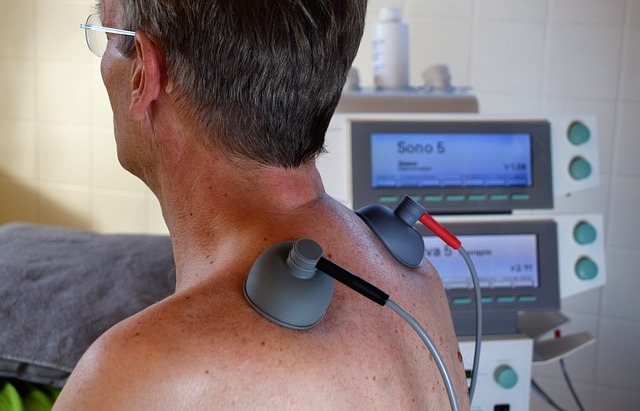Portable Oxygen Concentrators in the US: Usage, Safety and Maintenance Guide
For millions of Americans living with respiratory conditions such as COPD, emphysema, or pulmonary fibrosis, portable oxygen concentrators (POCs) represent a significant advancement in medical technology. These compact devices extract oxygen from ambient air, providing supplemental oxygen therapy while allowing users to maintain active lifestyles. Understanding how these devices work, their proper maintenance, and insurance coverage options can significantly improve quality of life for those requiring oxygen therapy.

Understanding Portable Oxygen Concentrators and How They Work
Portable oxygen concentrators function by drawing in ambient air, removing nitrogen through specialized filters, and delivering concentrated oxygen to users. Unlike traditional oxygen tanks, POCs continuously generate oxygen rather than storing a finite supply. Most models use either pulse-dose delivery (providing oxygen only when the user inhales) or continuous flow (delivering a steady stream of oxygen). The technology employs molecular sieve beds containing zeolite crystals that absorb nitrogen from the air, allowing oxygen to pass through and reach concentration levels between 90-95%. This process, called pressure swing adsorption, eliminates the need for oxygen refills and provides greater independence for users.
Key Features to Consider for POC Selection
When selecting a portable oxygen concentrator, several crucial features warrant careful consideration. Battery life varies significantly between models, ranging from 2-8 hours on a single charge. Weight is another critical factor, with ultralight models weighing as little as 2-3 pounds while more powerful units may reach 10+ pounds. Oxygen output capacity, measured in liters per minute (LPM), must match your prescription requirements. Most POCs deliver between 1-5 LPM in continuous flow or equivalent pulse-dose settings. Additional considerations include noise levels (typically 40-50 decibels), FAA approval for air travel, altitude performance ratings, and available accessories such as carrying cases and extra batteries.
Proper Handling and Storage of Portable Oxygen Concentrators
Proper handling of portable oxygen concentrators begins with understanding basic safety protocols. Always keep the device at least 5 feet away from open flames, heaters, or combustible materials. Never smoke or allow others to smoke near the device. When transporting your POC, protect it from extreme temperatures, exposure to water, and physical impacts. For storage, maintain the unit in a clean, dry environment with temperatures between 55-85°F (13-29°C) and humidity levels below 60%. Avoid storing your POC in direct sunlight, dusty areas, or where children or pets might access it. When not in use for extended periods, follow manufacturer guidelines for battery maintenance to prevent capacity deterioration.
Maintenance and Troubleshooting Common Issues
Regular maintenance is essential for optimal POC performance and longevity. Daily tasks include wiping external surfaces with a damp cloth and checking that air intake vents are unobstructed. Weekly maintenance should involve cleaning or replacing particle filters according to manufacturer instructions. Most models require more comprehensive maintenance every 1-3 years, including internal filter replacement and professional servicing. Common troubleshooting scenarios include insufficient oxygen flow (often resolved by checking for kinked cannulas or blocked filters), unexpected shutdowns (frequently related to overheating or battery issues), and unusual noises (which may indicate internal component problems). Always consult your user manual for model-specific maintenance schedules and troubleshooting guides.
Insurance Coverage and Accessibility in the US
Medicare coverage for portable oxygen concentrators falls under the Durable Medical Equipment (DME) benefit. Medicare Part B typically covers 80% of the approved amount for oxygen equipment rental if deemed medically necessary, while beneficiaries are responsible for the remaining 20% after meeting their annual deductible. Private insurance coverage varies significantly between providers and plans, with some offering purchase options rather than rental-only arrangements.
| Insurance Provider | Coverage Type | Typical Patient Responsibility |
|---|---|---|
| Medicare | 80% of approved rental costs | 20% coinsurance after deductible |
| Medicaid | Varies by state | Minimal or no cost with prior authorization |
| UnitedHealthcare | Rental or purchase options | Varies by plan (typically 10-30% coinsurance) |
| Blue Cross Blue Shield | Rental coverage with prior authorization | Varies by specific plan (typically 20% coinsurance) |
| Cigna | Rental coverage when medically necessary | Varies by plan level and deductible status |
Prices, rates, or cost estimates mentioned in this article are based on the latest available information but may change over time. Independent research is advised before making financial decisions.
The acquisition process typically requires a prescription, documentation of medical necessity, and sometimes additional testing to determine oxygen needs. The Respiratory Home Care Act and Affordable Care Act provisions have improved accessibility, though many patients still face challenges navigating insurance requirements.
Optimizing Respiratory Health with POCs
Portable oxygen concentrators have transformed respiratory care by offering unprecedented mobility and independence for oxygen-dependent individuals. With proper selection based on individual needs, consistent maintenance, and understanding of insurance coverage options, users can maximize the benefits of these devices. While technological advancements continue to improve POC efficiency, battery life, and size, the fundamental principles of safe usage and proper care remain essential for anyone relying on supplemental oxygen therapy. By approaching POC ownership with informed decision-making and regular maintenance, respiratory patients can experience significant improvements in quality of life and daily independence.
This article is for informational purposes only and should not be considered medical advice. Please consult a qualified healthcare professional for personalized guidance and treatment.




